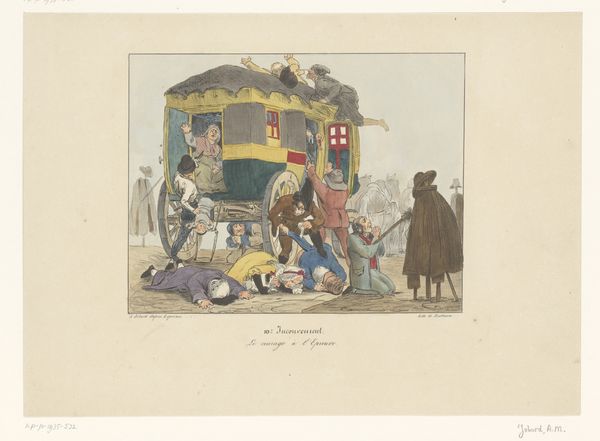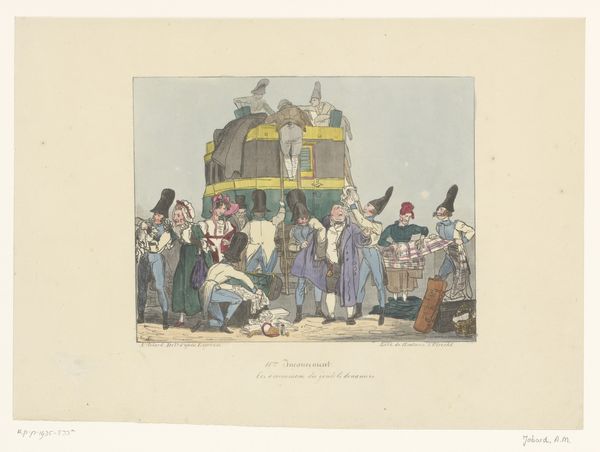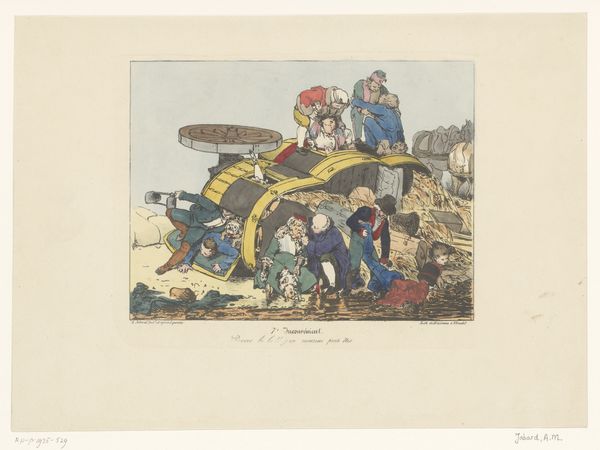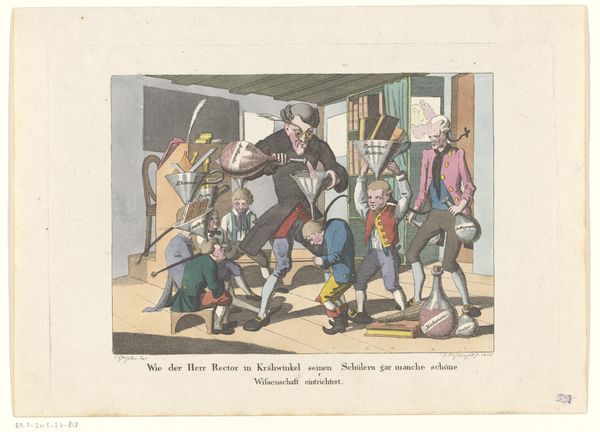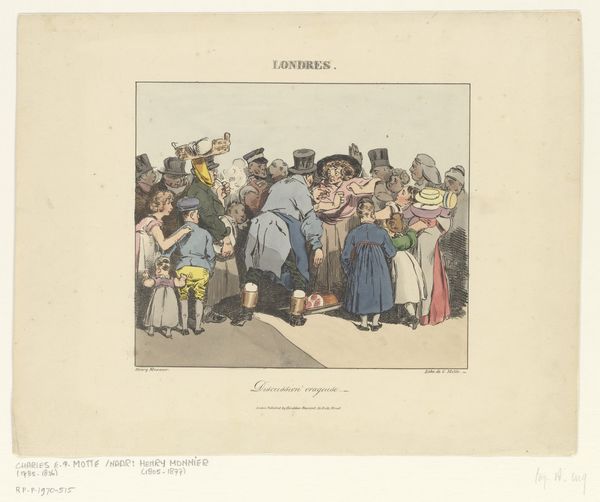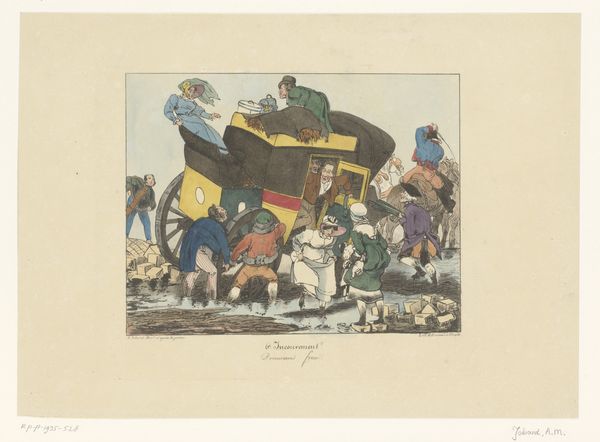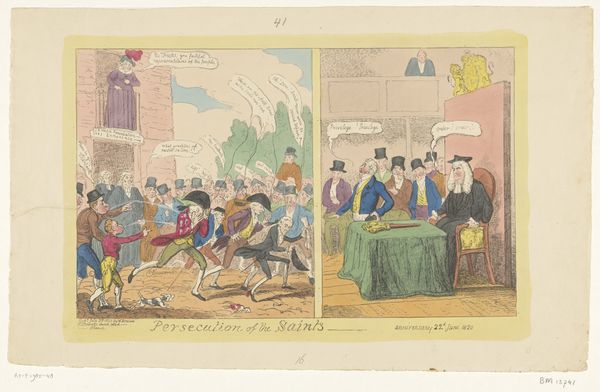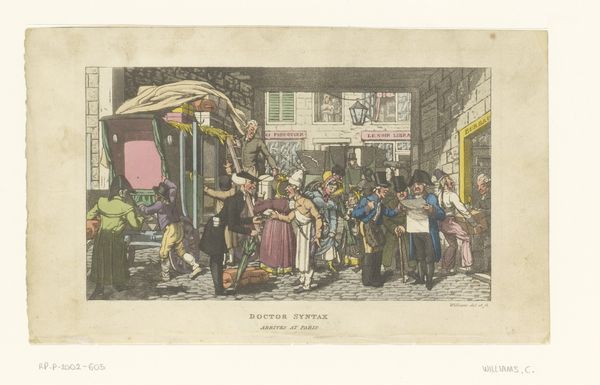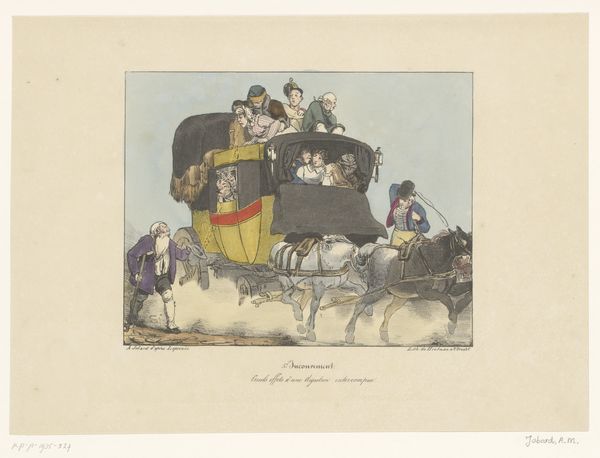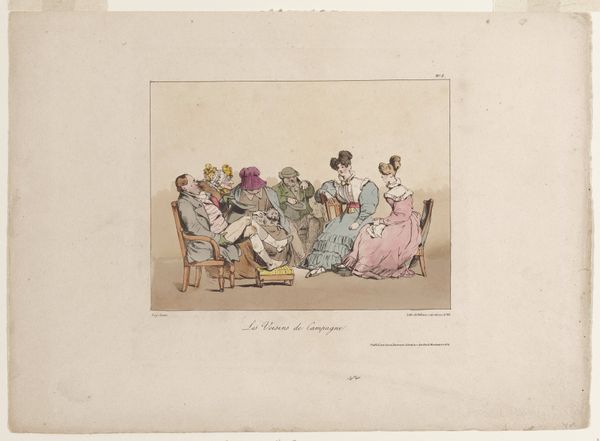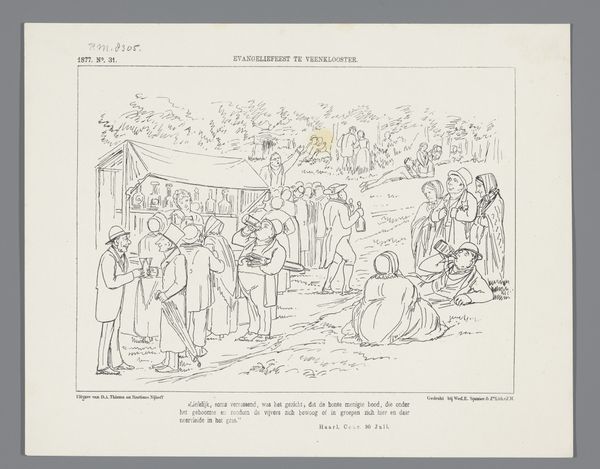
drawing, lithograph, print, etching, paper, pen
#
drawing
#
lithograph
# print
#
etching
#
caricature
#
traditional media
#
figuration
#
paper
#
romanticism
#
line
#
pen
#
cityscape
#
genre-painting
#
history-painting
Dimensions: height 259 mm, width 357 mm
Copyright: Rijks Museum: Open Domain
Editor: So, this is "Passagiers stappen na terugreis uit een omnibus," which I think translates to "Passengers disembarking from an omnibus after a trip," by Joseph Ambroise Jobard, created sometime after 1826. It’s a print, a lithograph actually, with etching and drawing, using pen and paper. I find it incredibly chaotic, like a snapshot of urban life! What strikes you about it? Curator: Considering Jobard’s piece through a materialist lens, I'm drawn to the sheer labor involved in producing this image. The etching, the lithography, the hand-coloring, and the paper itself--all these speak to a specific mode of production. The romantic style clashes with the harsh realities of early industrial capitalism in its manufacturing. How does the consumption of this image reflect or distort those material conditions for its original audience? Editor: That's a really interesting point! I hadn't thought about the contrast between the artwork's production and the image itself. It's a scene of everyday life made using relatively elaborate means. Does the choice of materials tell us anything about Jobard's intended audience or purpose? Curator: Absolutely. Lithography made images more accessible and easily reproducible compared to earlier printmaking methods. The print likely reached a burgeoning middle class, hungry for depictions of their own lives and experiences. We have to remember the historical moment - industrialization was drastically shifting class structures, where mass production democratized images even if artistic labor itself remained under recognised. What tensions do you notice between accessibility and elitism? Editor: I see! It's accessible because it's a lithograph, making it relatively cheap, but the subject matter, this busy scene, probably appealed to the aspirational middle class, the new consumers of art. I hadn't really connected those dots before. Curator: Precisely. And we might even speculate about the socio-political ramifications of this democratization. How does the circulation of these images challenge traditional hierarchies of representation and value? Editor: I guess seeing these everyday scenes elevated as art would have been radical! Thinking about the production of art and who it was for gives the artwork an even bigger context. Thank you. Curator: Indeed! Considering art as labor and a product is invaluable for understanding art's role in broader societal transformations.
Comments
No comments
Be the first to comment and join the conversation on the ultimate creative platform.
